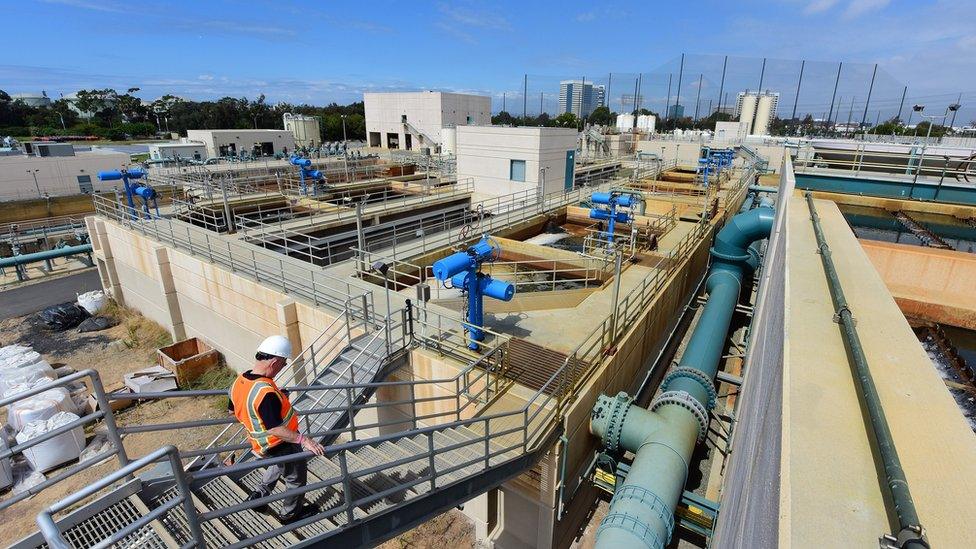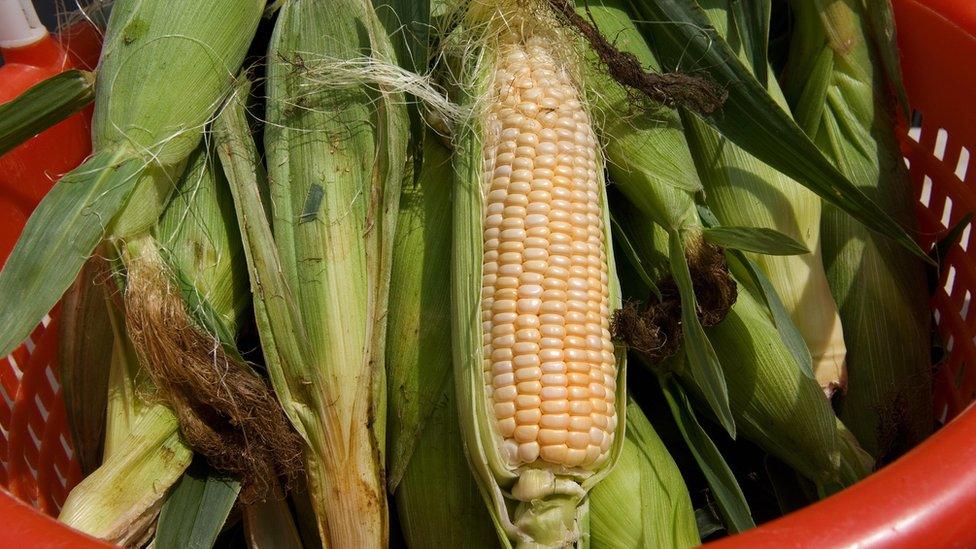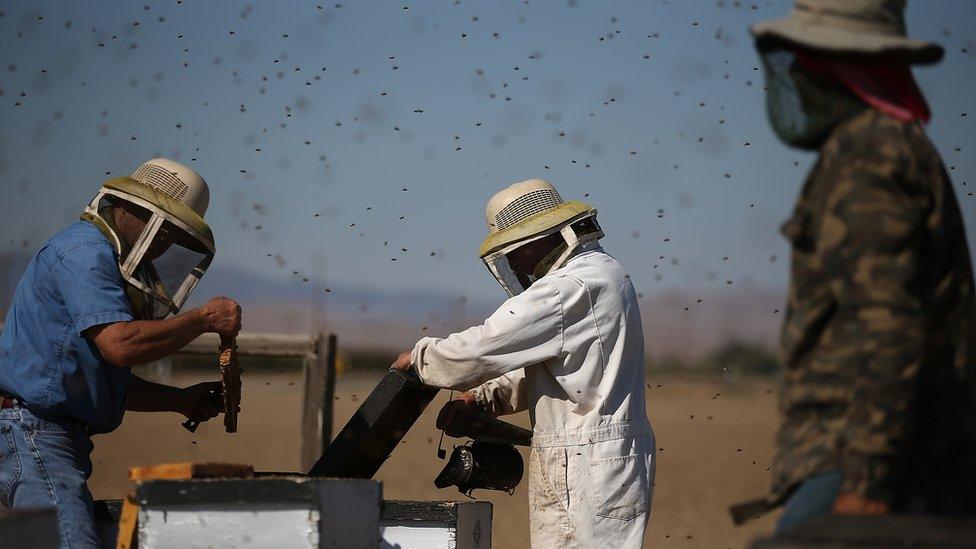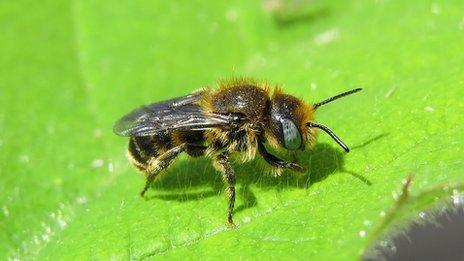First study finds neonic pesticides in US drinking water
- Published

Neonicotinoids have been found in samples from US water treatment plants
Small traces of the world's most widely used insecticides have been detected in tap water for the first time.
Samples taken by scientists in the US state of Iowa showed that levels of neonicotinoid chemicals remained constant despite treatment.
However drinking water treated using a different method of filtration showed big reductions in neonic levels.
Scientists say they cannot draw any conclusions relating to human health but argue that further study is needed.
Rapid uptake
The use of neonicotinoids has increased rapidly since their introduction in the early 1990s.
These systemic chemicals were seen as an advance because they are usually applied as a seed coating and are lethal to insects but not to other species.

Many US crops are seed-treated with neonicotinoid insecticides
In the US, sales of seeds pre-treated with neonics tripled from 2004 to 2014.
However concerns over their environmental impacts have also grown and they have been consistently associated with causing harm to bees. So great has the worry been, that there has been a moratorium on their use on flowering crops in the European Union since 2013.
A study in 2015 from the US Geological Survey, external (USGS) found that neonics were widespread in water samples collected from 48 different rivers and streams in the US.
This new study from the USGS and the University of Iowa, looked at tap water that was treated in two different filtration systems.
Samples from the University of Iowa treatment plant barely removed any of the three main neonic chemicals, clothianidin, imidacloprid and thiamethoxam.
Water taken from the Iowa City treatment facility removed 100%, 94% and 85% respectively, of these substances.

Bee numbers in the US have declined with many scientists blaming the use of neonicotinoids
Drinking water from the less effective system had 0.24 to 57.3 nanograms of individual neonicotinoids per litre.
"These are very low levels, these are nanograms per litre which means parts per trillion, a very low concentration," said Prof Gregory LeFevre, one of the authors from the University of Iowa.
"But at the same time there are concerns about what those low levels might do from an exposure standpoint."
In the US, the Environmental Protection Agency regulates contaminants in water but as of now, neonics are not considered a threat.
"At this point in time, these results don't indicate any violation of the system, we are trying to bring these contaminants to light more than saying this is or isn't a safe level," Prof LeFevre told BBC News.
One of the issues of concern is not the direct exposure of humans to neonics in water, but how the insecticides might be transformed by the filtration process into other substances that pose a greater threat.
"Based on some of the literature that has been published, the nitro group has the potential to be removed in the filtration processes and that is the group that confers the selectivity to insects," said lead author Kathryn Klarich from the University of Iowa.
"If that were the case that could be a concern," she told BBC News.
However the study also presents evidence that the presence of neonics in drinking water can be essentially negated if activated carbon filtration systems are used.
"We were pleasantly surprised to see how well the activated carbon worked," said Prof LeFevre.
"It is relatively economical compared to other technologies that are energy expensive. We need to do more research to understand how well these can work but it is encouraging."
The authors believe that, given the scale of research looking at the impacts of neonics on bees and other creatures, it is important that further studies are carried out on drinking water to work out the levels of exposure around the world.
"Without really good toxicity data it is hard to ascertain the scale of this, but whenever we have pesticides in the drinking water that is something that raises a flag no matter what type of concentration it is," said Prof LeFevre.
The study has been published, external in the journal Environmental Science & Technology Letters.
Follow Matt on Twitter, external and on Facebook, external.
- Published16 August 2016
